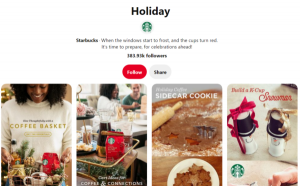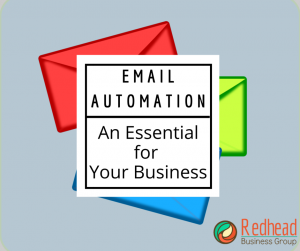
Emails are a useful and direct way for B2B organizations to share information with customers and prospects and can be effectively used to market products/services, share new content, announce the latest company news, promote upcoming events and much more. However, with so many businesses using email as a marketing tool, inboxes can be overloaded and many emails go unopened and unseen.
With email marketing comes email marketing performance. How do you know if your email marketing efforts are effective? Analyzing email metrics can help your business determine how well your emails are performing. Common email performance metrics include looking at open rate, bounce rate and click-through rate (CTR).
CTR is considered one of the best indicators for your email performance as it focuses on those that did open your email and what sparked their interest or persuaded them to find out more. Clicks on certain types or topics of content can indicate what your audience wants to know more about, allowing you to better tailor your content-creating efforts.
Metrics for Email Performance
First, you should benchmark how your email performance compares to industry trends. Below are the IT/Technology/Software Services industry email averages from a recent Campaign Monitor study:
- Open rate: 19.45%
- CTR: 2.80%
- Unsubscribe: 0.20%
As you can see in this example, the industry average open rate of almost 20% might seem high, but the CTR is only around 3%. If your email list is 500 people, by this average, 100 people will open your email, and only about 15 people will click on a call-to-action or link.
It is also important to note that many factors can impact these rates, including industry, database health, email content and send times. Track your email performance on a per-send basis so that you can begin to create more personalized benchmarks that apply more directly to your email campaigns.
To improve your CTR and overall email performance, use these five B2B email marketing tips and best practices.
1. Brand and Website Alignment
Consistency and coherence are key when sending out marketing emails. Your emails are a direct representation of your branding and messaging, and should convey both. Brand consistency is an important aspect of gaining recognition as a reliable business and will ultimately help build trust.
Focus on the layout of your emails to include only what is necessary. Extra images and “fluff” can be distracting and draw attention away from the intended purpose of your email campaign.
Once a recipient opens your email, the goal is to get them to click on the call-to-action (CTA) included in your email. The path your audience takes from opening the email to clicking a CTA to arriving at a landing page on your website should be brand aligned and consistent. The layout of your email should be a product of your website design and should emulate your brand.
Just like your website already is (or should be!), make sure your emails are also optimized for mobile viewing. Over 50% of emails are opened on a mobile device, and this is estimated to increase as technology continues to evolve. Your email’s user experience should seamlessly transition to your website.
2. Make CTAs the Focal Point
Before you even begin writing content for your email, layout what call-to-actions and content you plan on including. Highlight one primary CTA that you wish to emphasize in your email and give your recipient multiple opportunities to take that action. These opportunities could be a mix of buttons, images or a URL link.
3. Concise Copy
Less is more with email copy, so keep the focus on what you want the recipient to do with the content you are giving them. Rather than including long paragraphs, shorten big sections of text into bullet lists and 1-2 sentence long paragraphs.
Email copy should be a high-level overview that provides a quick introduction to your content offering and the value it provides. It should be enough to draw in your recipient to read more, but not so much that they glance at it and decide they don’t have time to read it.
4. Develop a Format
Your email messaging strategy should be clear, simple and easy for your recipient to identify and follow. If you haven’t already, create an email template so that certain types of content always live in the same sections. This will give your recipients a structure to always expect in your email sends. This will help your emails become more easily digestible. People like to know what to expect, and when they see something familiar, they follow along better.
5. Include a P.S. Section
While your primary CTA should be the focus of your email, it is always fun to give a little extra to your recipients. Adding a P.S. section can give your email a playful spin, while still staying true to your business persona and goals.
A P.S. section is a good place to include a link to social sharing options, an upcoming event or even a “bonus” article or blog. Whatever you decide to use this section for, keep it consistent with the same type of content, but change up the copy each time. An example of using social sharing options would be to automatically link your primary CTA to a pre-populated post that can be directly shared on Facebook, LinkedIn or Twitter.
Make Your Emails Work for You
Email marketing, while an easy way to reach out to your audience, only works when done properly. Tracking email opens and clicks will give you a big picture view of how people are receiving your message and provide you with valuable insight into how to improve your overall performance. Notice what makes your recipients click for more, and that will give you a good indication about what content they’re seeking. Use these email best practices to help you achieve your email marketing performance goals.
Digital & Social Articles on Business 2 Community
(103)






